Condos
July 12, 2023
Les Ensembliers Renovates A Pied-à-Terre In The Iconic Habitat 67 Complex
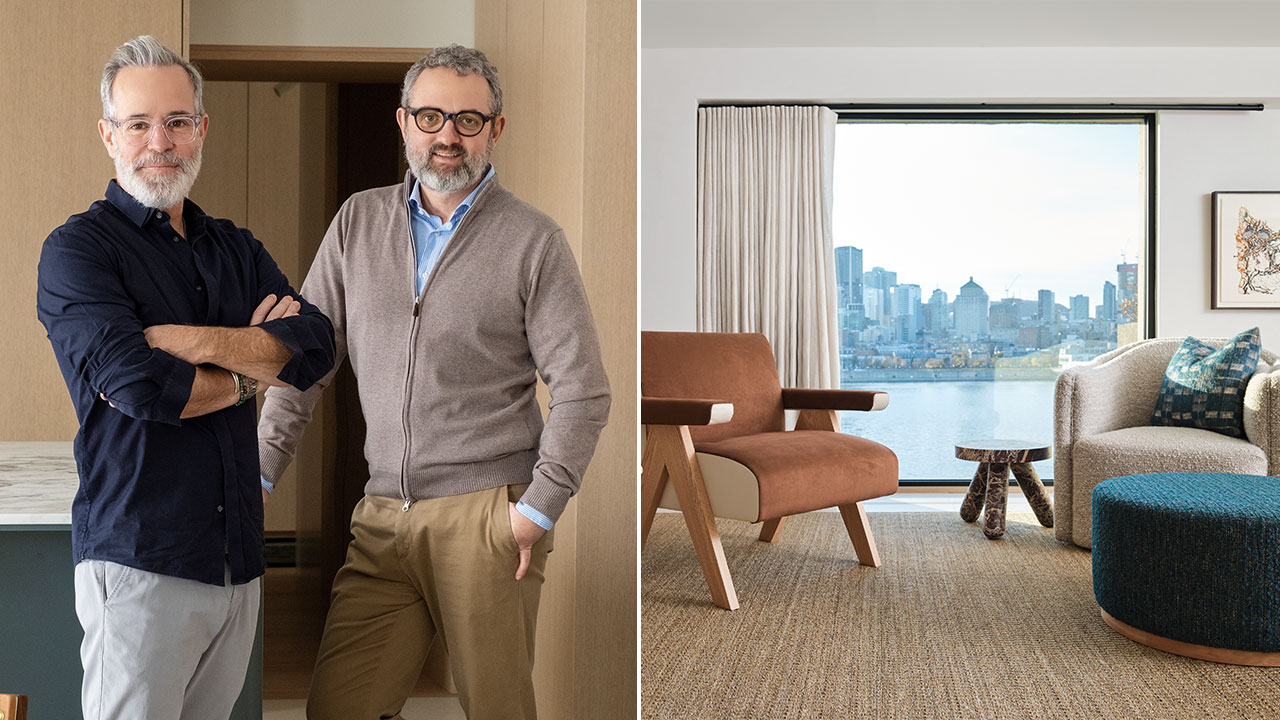
Like a set of blocks stacked on the bank of the St. Lawrence River, Habitat 67 isn’t just an apartment complex, it’s part of Montreal history. Built in 1967 as part of Expo 67, the unique Brutalist structure was Moshe Safdie’s thesis project while studying architecture at McGill University. Moshe, who later went on to design the Montreal Museum of Fine Arts and the awe-inspiring Jewel Changi Airport in Singapore, had a vision for dense living quarters in the heart of the city that would still offer a suburban sense of privacy and space.
Constructed on Cité-du-Havre, an artificial peninsula, Habitat 67 is composed of prefabricated concrete blocks arranged to create 148 residences. Instead of a tall tower with long corridors, blocks are stacked lengthwise and connect through outdoor passageways that weave through landscaped gardens. “They’re like little houses in disguise,” says Richard Ouellette of Les Ensembliers.
Richard and partner Maxime Vandal were given carte blanche by their client to transform the two-block, 1,300-square-foot unit into a sleek pied-à-terre. (She has a place outside Montreal with her husband, but often stays in the city when she’s working.)
Scroll down to see how they transformed this heritage condo!
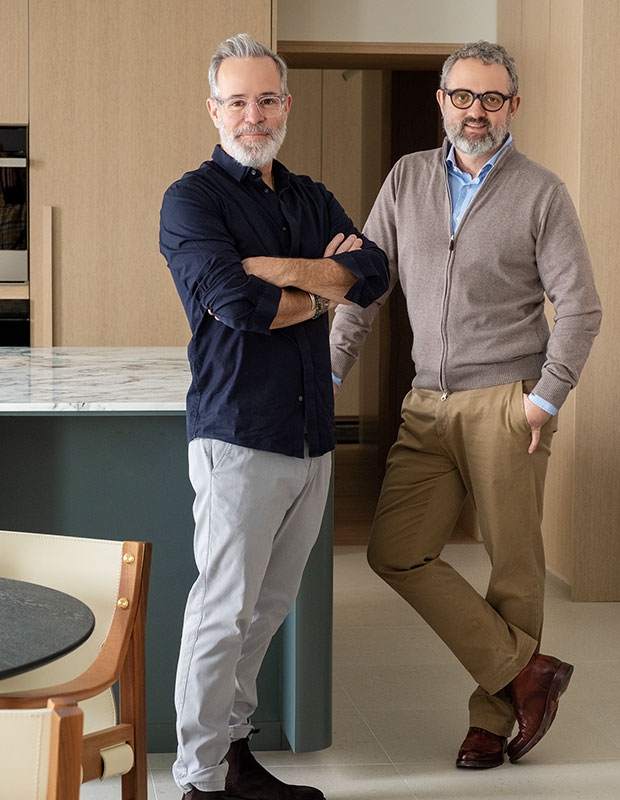
Richard (left) and Maxime stripped the two-bedroom unit down to its concrete shell and rebuilt it as a one-bedroom dwelling with a large custom closet to accommodate the client’s extensive wardrobe. “One cube is for living and entertaining, and the other is a private sanctuary,” says Richard.
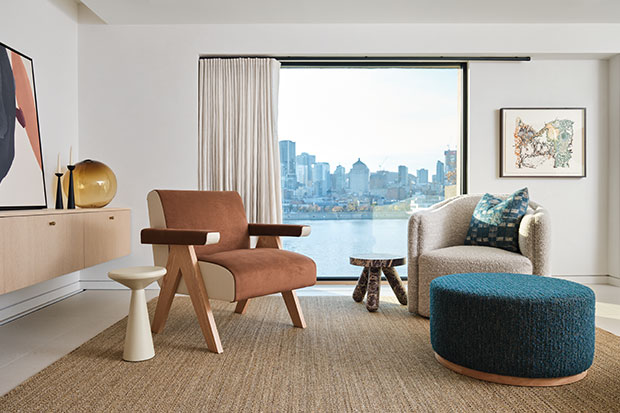
In the main cube, hard surfaces are balanced with a soft plaster finish on the walls and materials such as velvet and bouclé. Accessories were sourced from local artisans whose work embraces the nostalgic spirit of Habitat 67 while furniture was kept low and curved to maintain flow. “We treated this project a little like a boat,” says Maxime. “Every inch was well thought out to maximize the experience.”
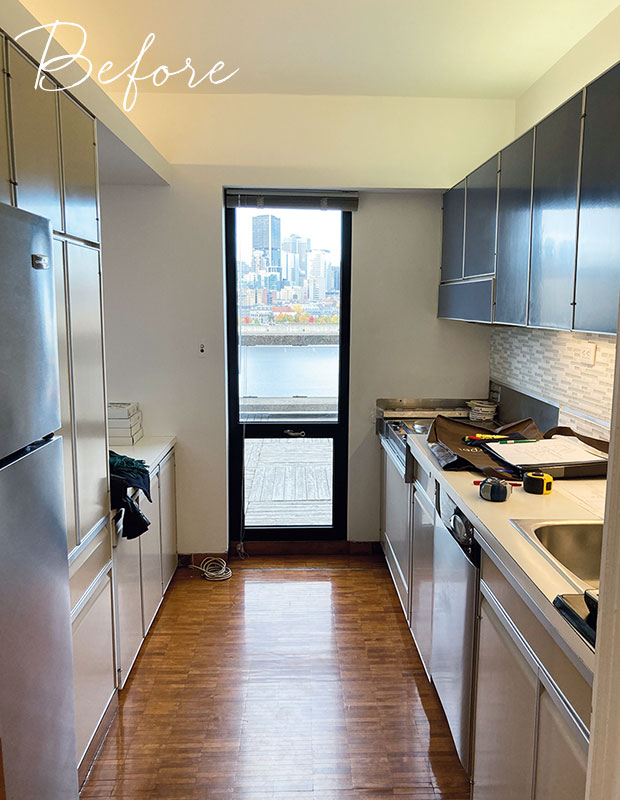
Before: The original galley kitchen felt cramped and dated.
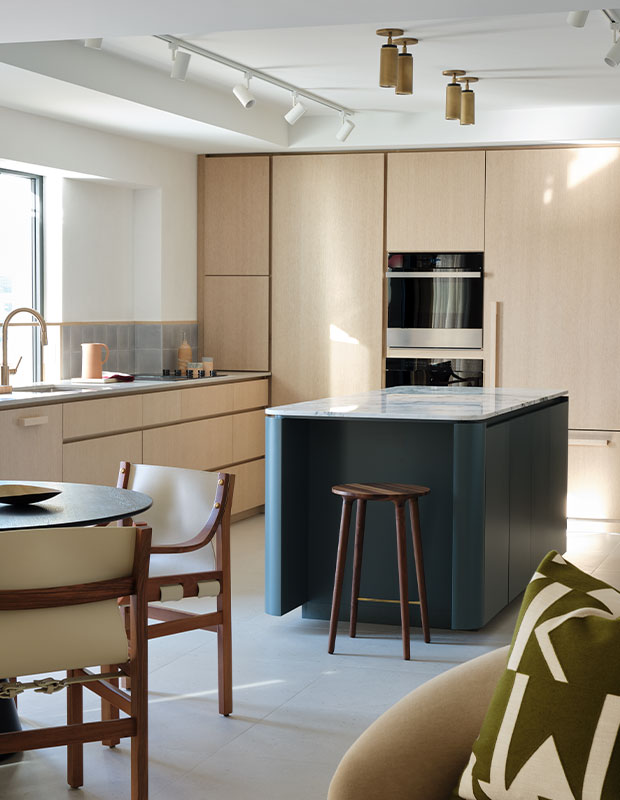
“The curved island and minimalist cabinets blend and give the feeling of something more open,” says Maxime of the updated kitchen.
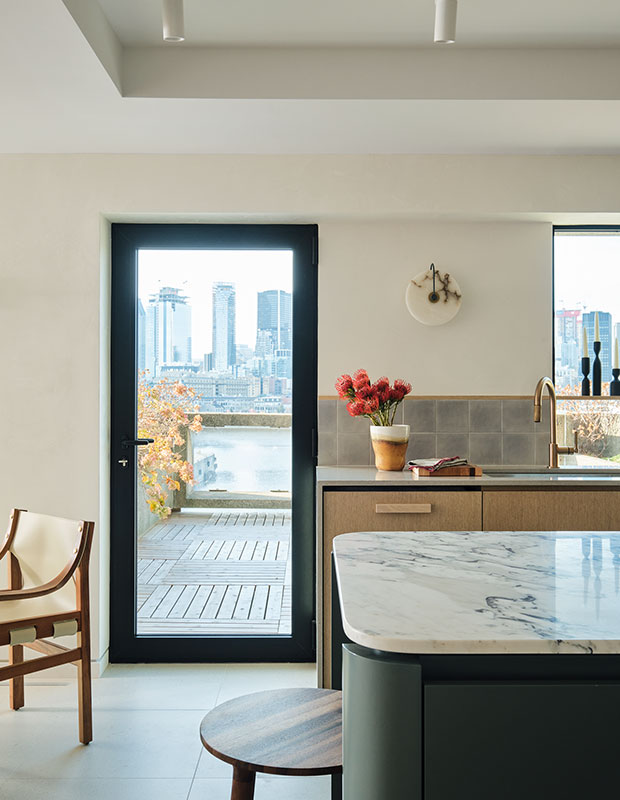
Low profile furniture doesn’t interfere with the view of the river and downtown Montreal. “The cubes are connected by exterior walkways and lots of green space, so it’s ideal for her dog,” says Maxime.
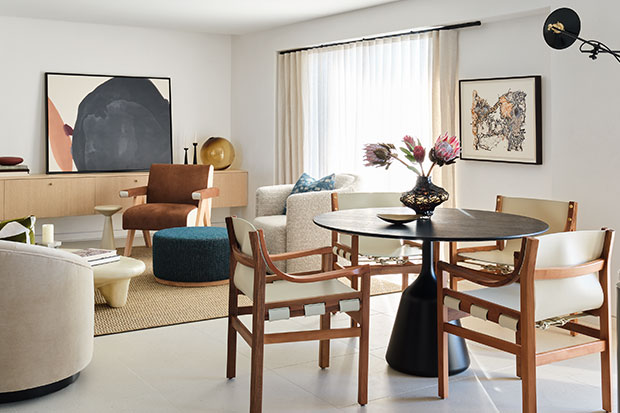
At the big reveal, the client was brought to tears when she saw the rejuvenated condo. “She could feel the experience of Moshe Safdie’s vision of the space,” says Richard. “It’s warm and feminine with a vintage Italian vibe that feels respectful of the architecture.” Adds Maxime: “We modernized the space but also brought back its spirit.” The leather and wood dining chairs are a nod to the boats in the nearby port.
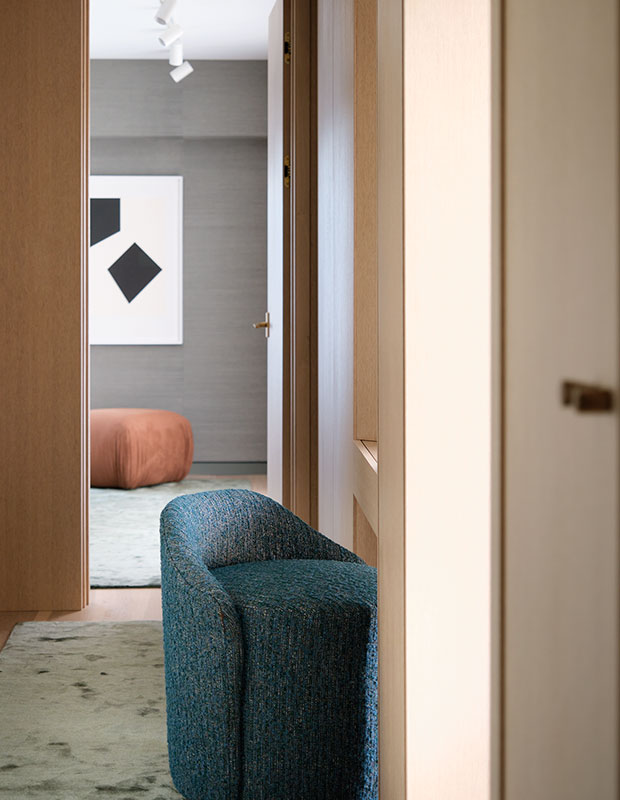
A wood-panelled antechamber leads to the closet, bathroom and bedroom area, which has a moody palette accented with blond wood and plush rugs. “It gives the sensation of being its own little hideaway,” says Maxime. “It’s that place where you read your book and wind down at the end of the day.”


Before: The original mirrored closets lacked functionality and ample storage space.
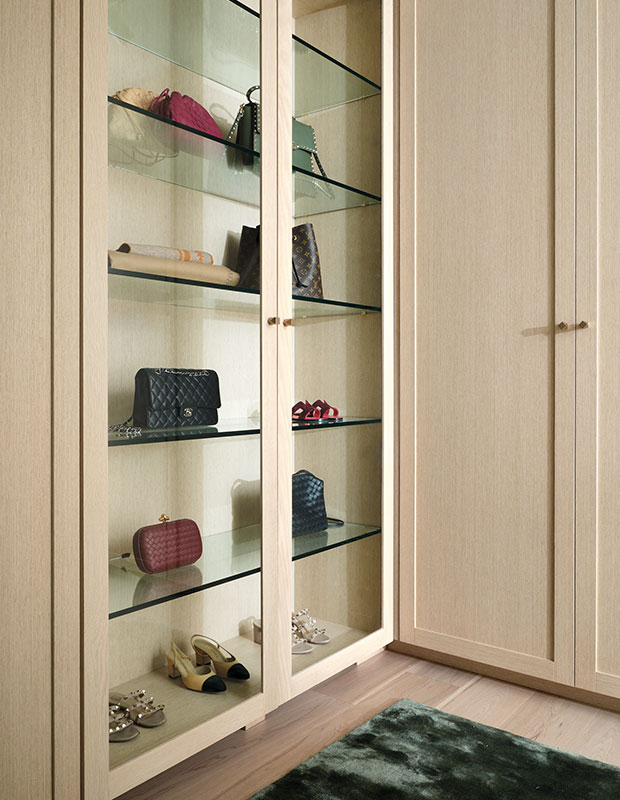
“We created little moments of Shaker style to add texture in the closet, but it’s all simple and clean-lined, using the same material,” says Maxime.
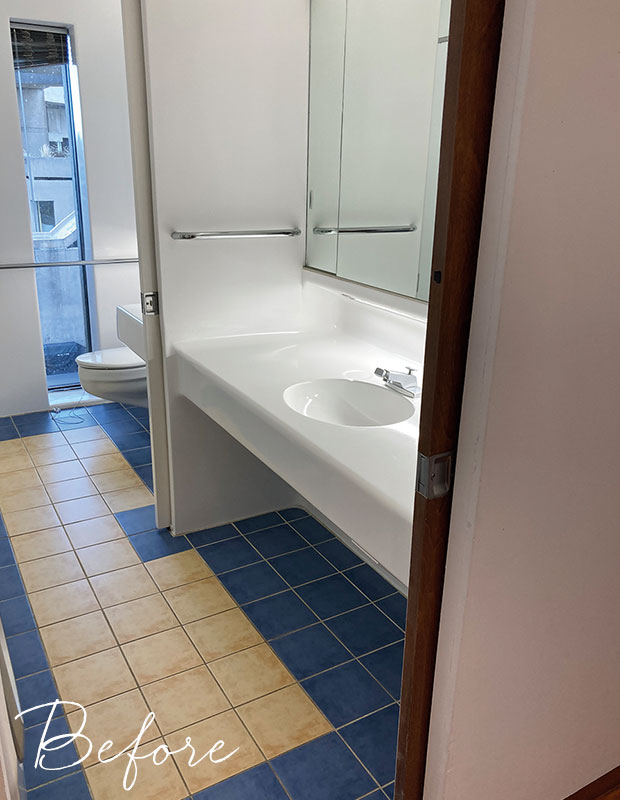
Before: The main bathroom felt cold and sterile.
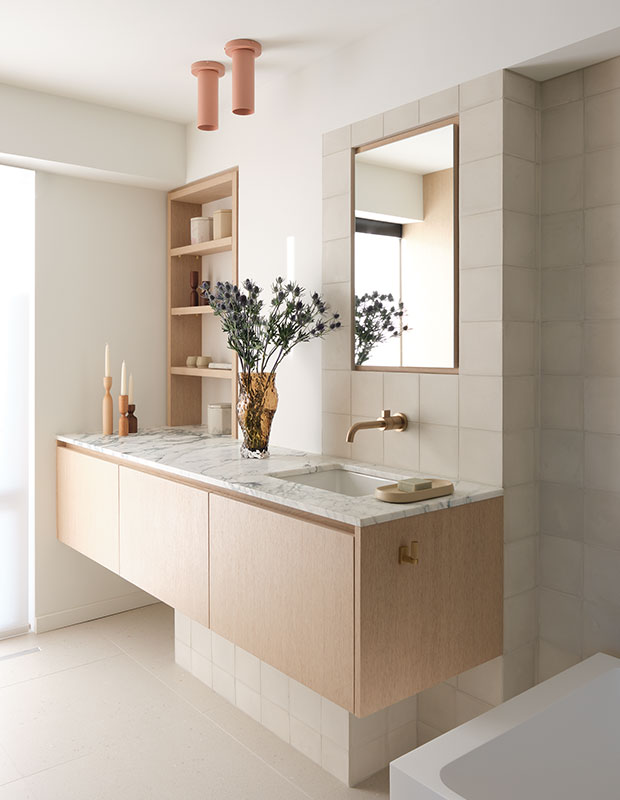
In the updated principal bathroom, Maxime and Richard transformed a niche in the original concrete wall casing into shelving for decorative objets.
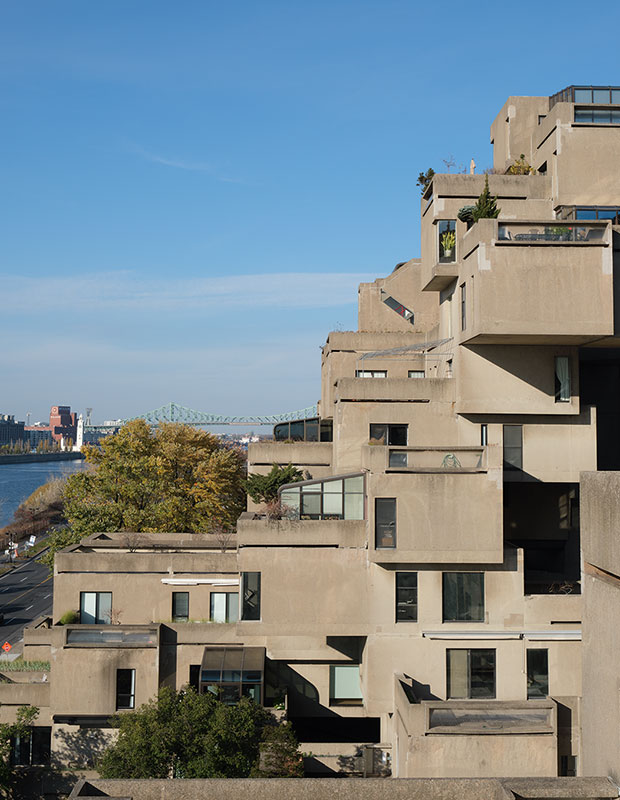
“Our client enjoys the benefit of the city, and the privacy and beauty of the grounds, plus, she’s living in a landmark building,” says Richard.
André Rider
Richard Ouellette and Maxime Vandal

